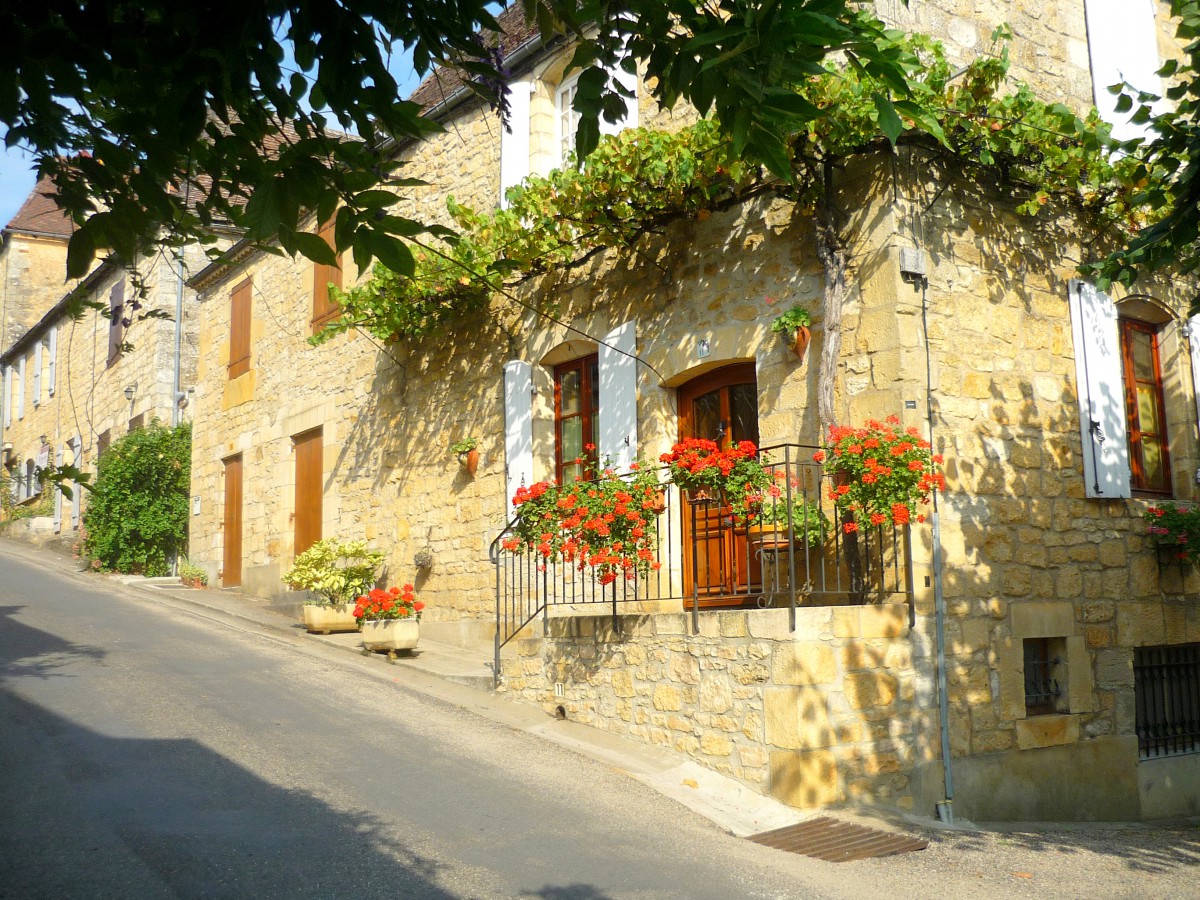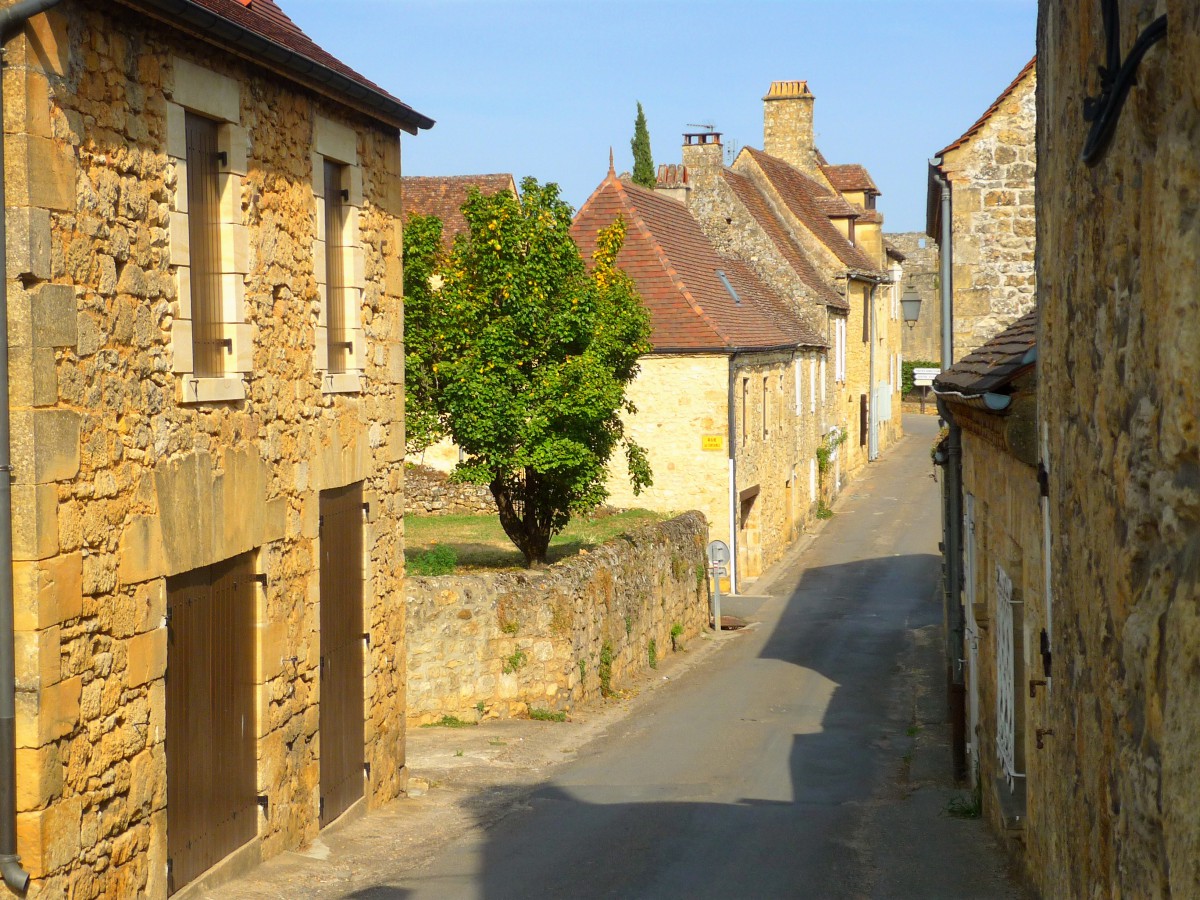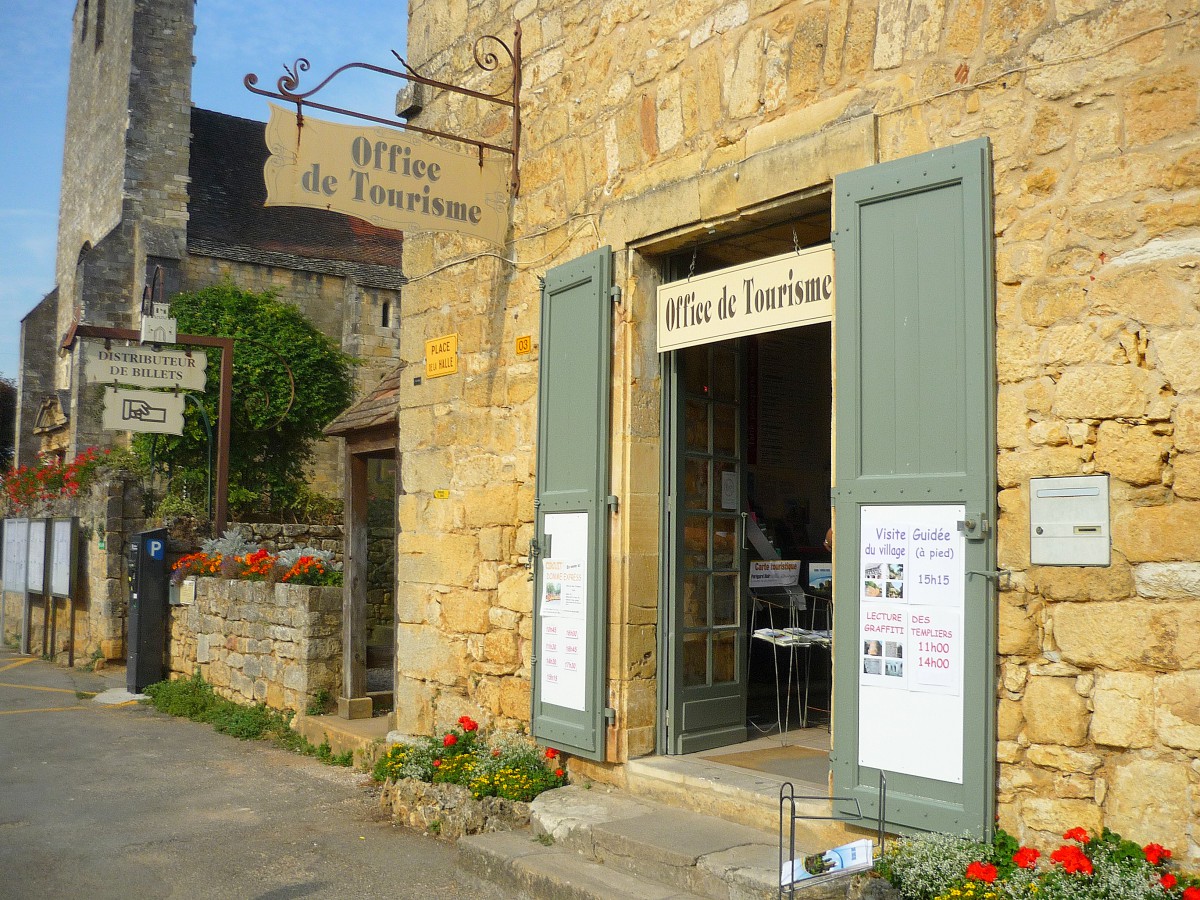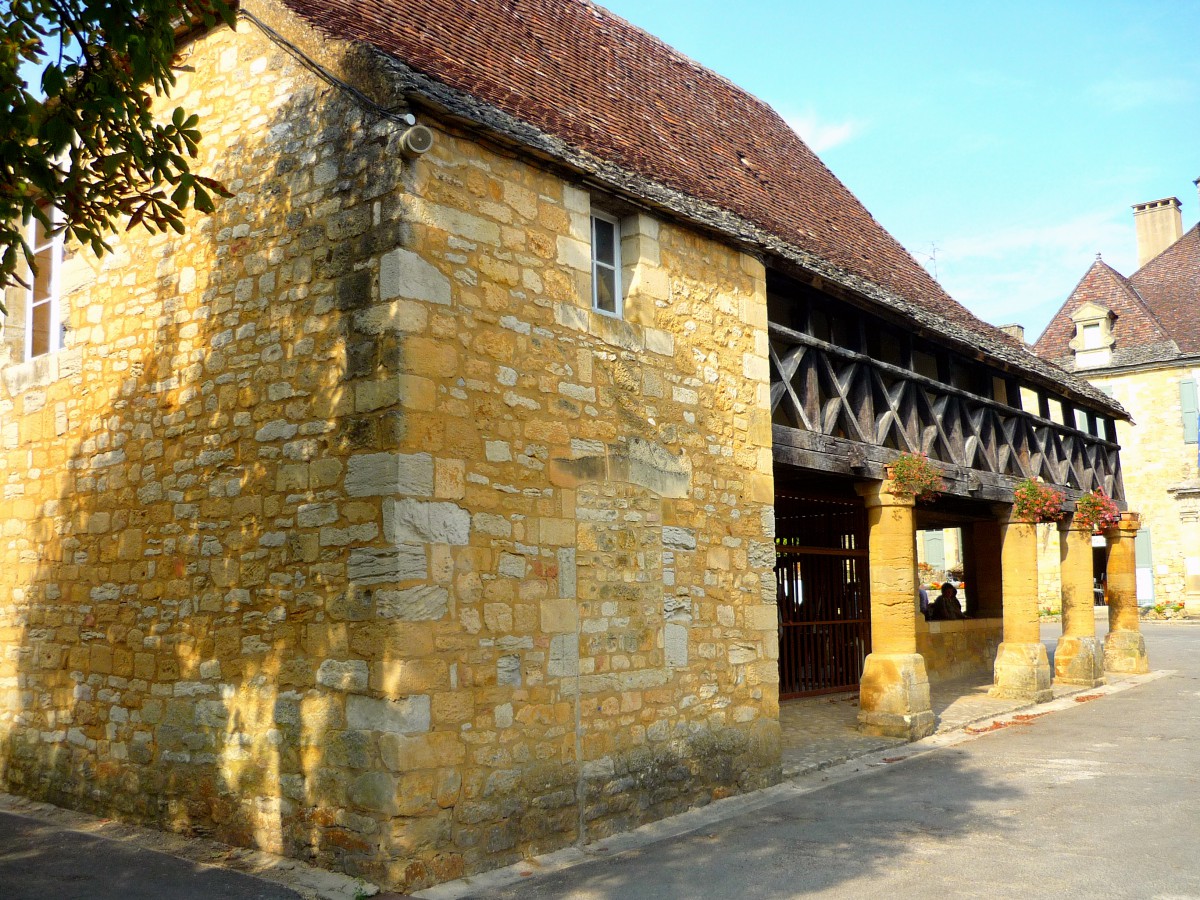Ideally set atop a hill above the Dordogne River, Domme is often nicknamed ‘the Acropolis of Périgord’. The village is an old bastide town founded in the Middle Ages. One of the most visited sites in the Périgord and one of France’s most beautiful villages.
Historic Overview of the Bastide of Domme

Domme is an old bastide (fortified town) founded in 1281 by King Philippe III during the Albigensian Crusade. The village was built on a hill 150 metres above the Dordogne River. Contrary to old walled towns (such as Carcassonne or Provins), a bastide usually had a rectangular layout. However, that of Domme is actually trapezoidal in shape, due to the natural abruptness of the site of the village. It is an excellent example of medieval military architecture. The streets are consistent with the geometrical layout of Domme and its ramparts are right at the edge of the cliff.
Over the years the fortified royal bastide has been well-preserved. It enjoys a fine view over the Dordogne Valley.
The fortified gates
Three principal entrances to the town still remain:
- the Porte del Bos (often the first gate through which visitors come to Domme),

- the Porte de la Combe (from the 13th century).
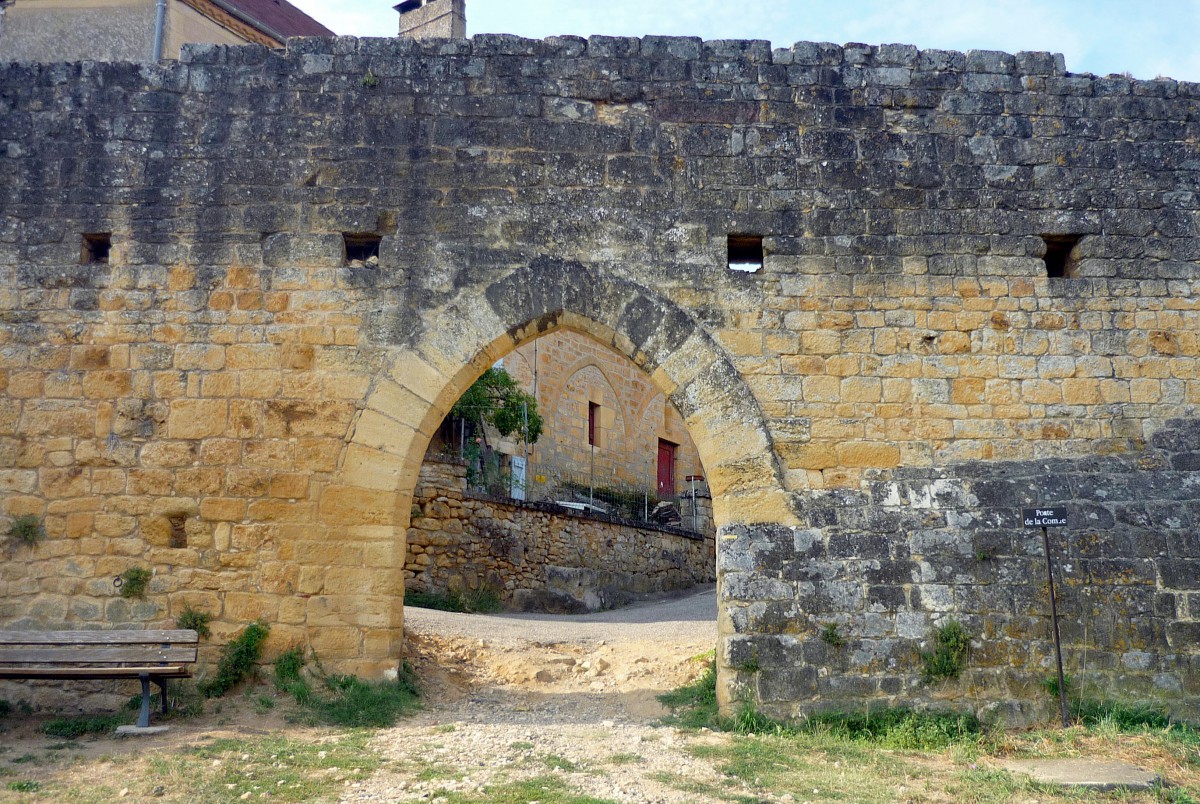
The two gates are linked by a protected walkway behind the ramparts.
- The third one, the Porte des Tours, dates back to the end of the 13th century and stands as the most imposing and best preserved of the ramparts. It served as a prison for 70 Templar knights between 1307 and 1318. Large amounts of graffiti were carved into the stone by the prisoners, remaining faithful to their Catholic beliefs in spite of persecution. In 1970, studies were conducted on these carvings. Searchers discovered other inscriptions that were invisible to the naked eye.
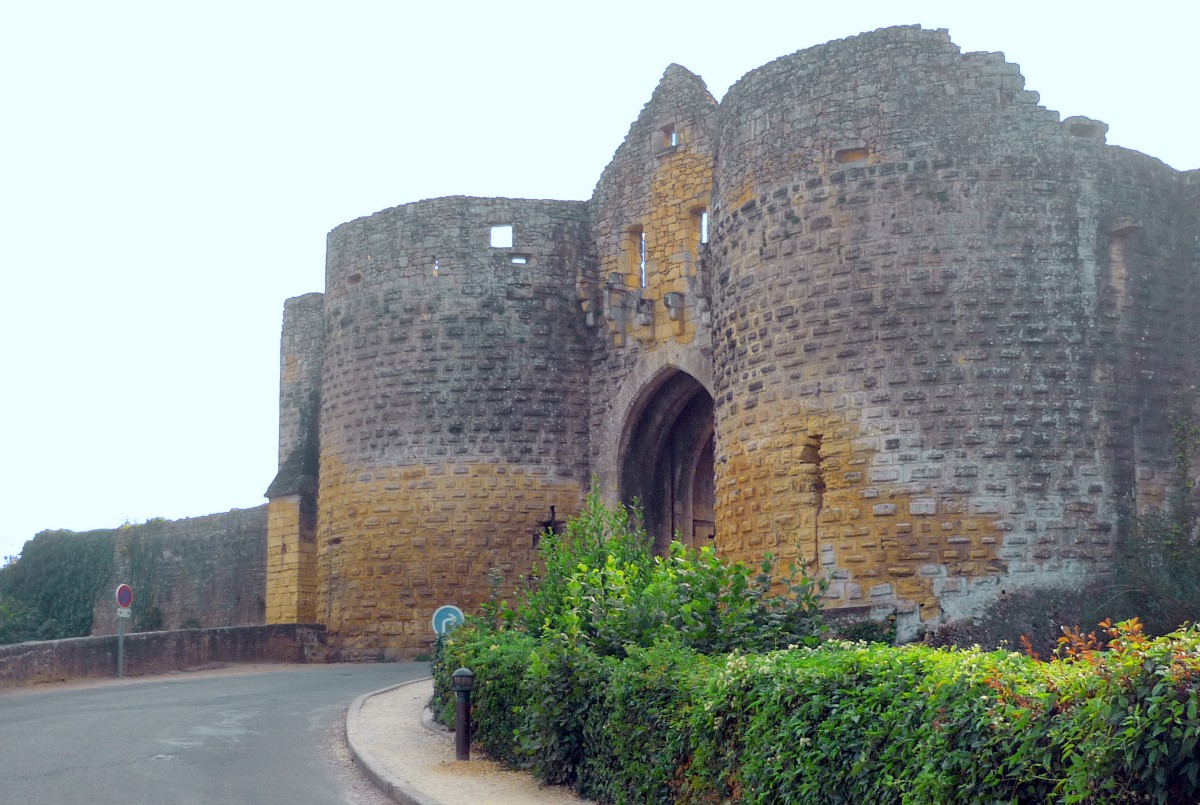
In the Middle-Ages, Domme obtained the King’s permission to make coins. During the Hundred Years’ War, the bastide became a coveted site by the English, who successfully seized Domme in 1347.
On several occasions, the bastide changed hands between the two rival sides. In 1437 it became French once and for all. During the Wars of Religion, Domme was still not spared either.

Domme in the 16th century
In 1588, it was taken thanks to a cunning strategy by Geoffroy de Vivans. The Protestant captain of the Castelnaud garrison climbed the cliffs of Domme at night with his men, in order to open the gates of the bastide to the rest of his army.
Four years later, in 1592, he was forced to surrender the place to the mightier Catholic troop gathered outside the ramparts.
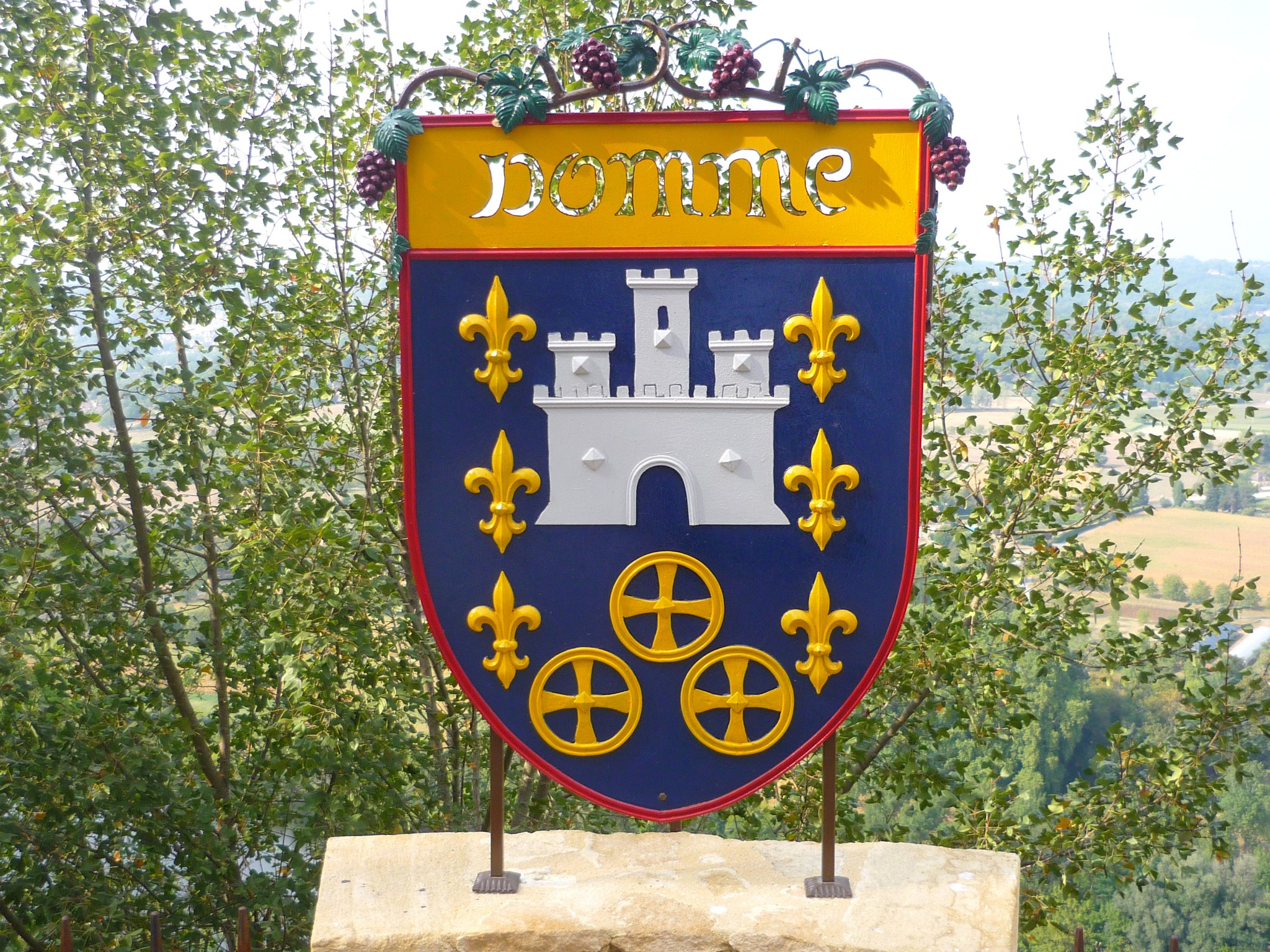
In 1594 and in 1637, Domme was again the stage for a popular revolt by a local peasant known as “Jacquerie des Croquants”. This rebellion was sparked by the excessive taxes imposed on peasants in south-western France. As a result, they refused to pay tithes, land taxes (tailles) and rent. Eventually they organised resistance against tax collectors and their agents.
In the 17th century, the bastide enjoyed great prosperity thanks to the quality of its vines, its markets and the boat traffic on the Dordogne River.
What to see in Domme
Domme is a historic site and it is not surprising to find some very fine buildings.
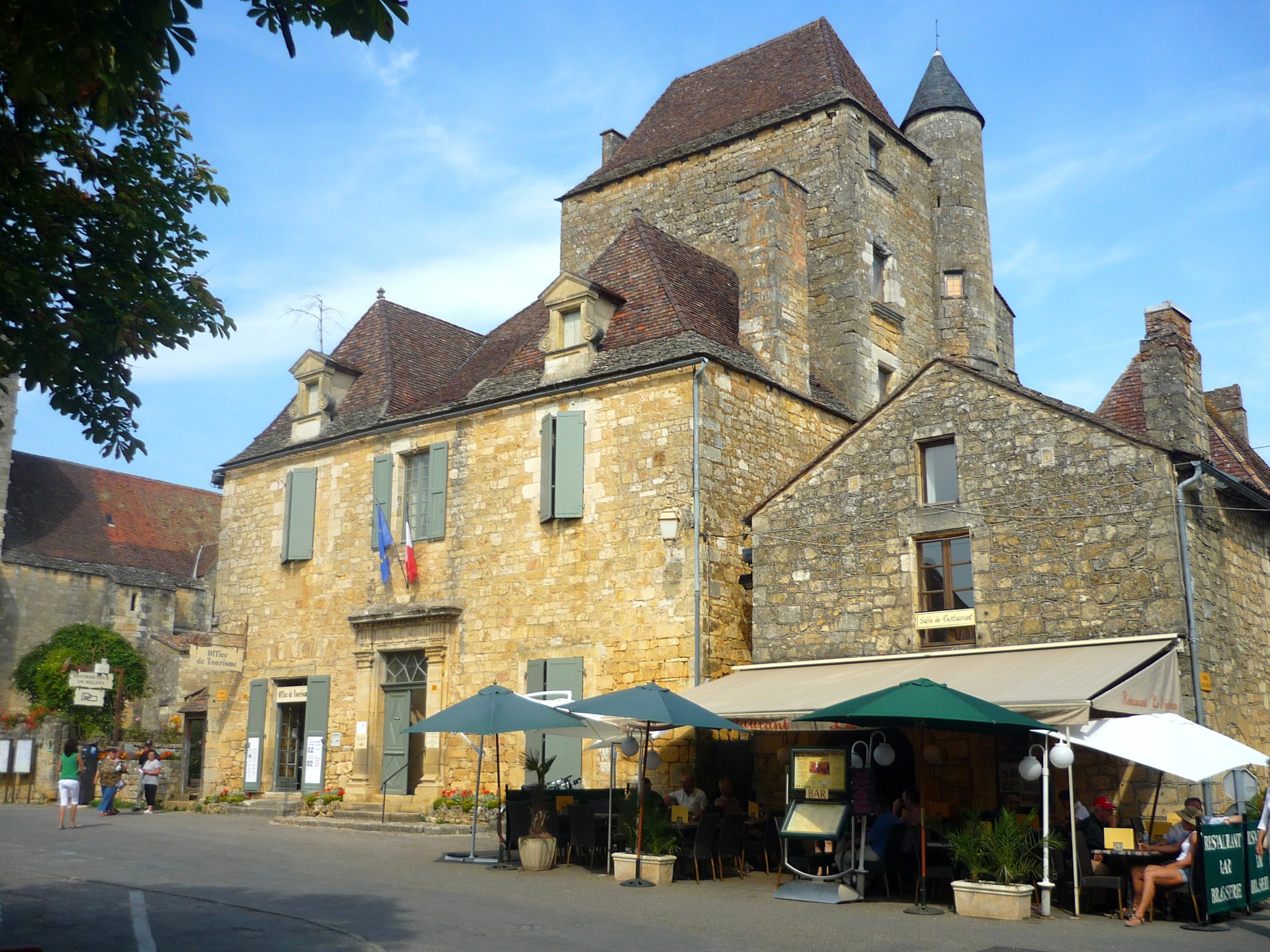
Medieval houses
Look at the many medieval houses when walking around inside the ramparts:
- the house of the coin maker with its gothic windows,
- and many dwellings along Rue des Consuls and Grand Rue.
Many other historic buildings are bordering Place de la Halle:
- the 13th century Town Hall (the former Justice House of the Seneschal) and
- the 15th century House of the Governor, flanked by a small bartizan, or watch tower.
The church of Notre-Dame de l’Assomption
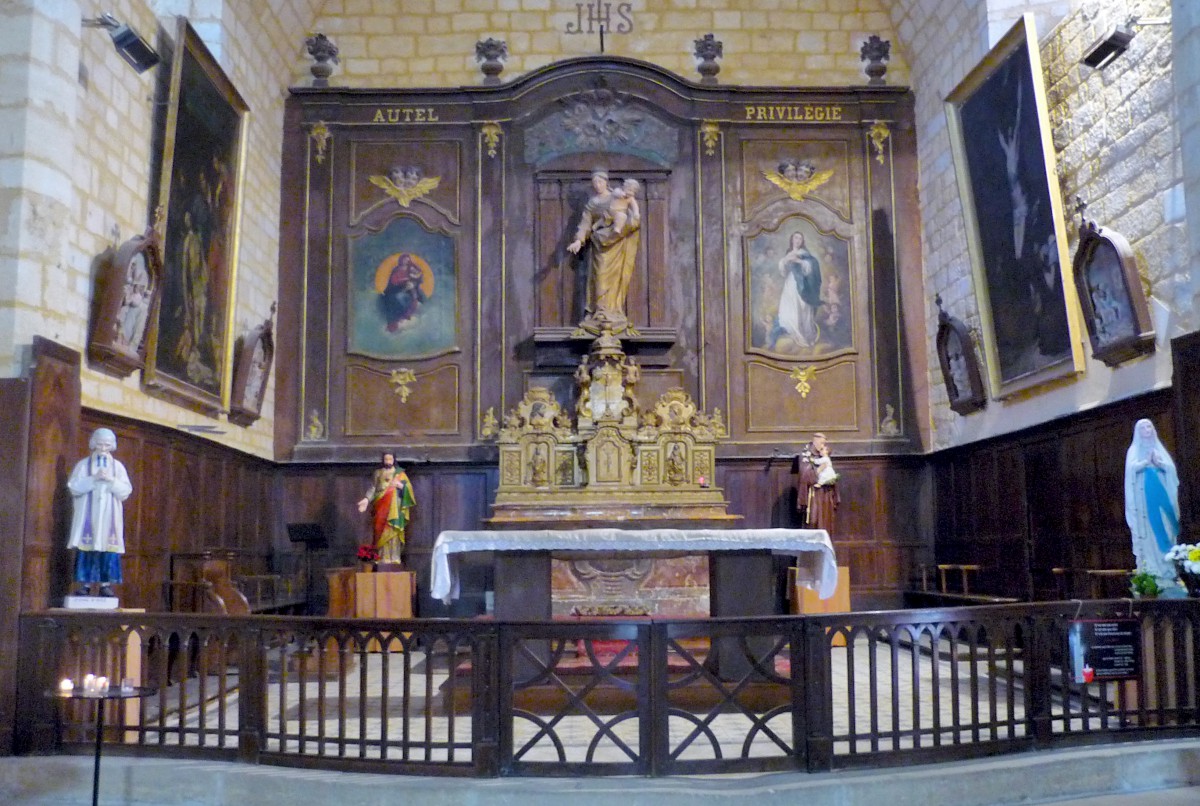
On the same square stands the parish church of Notre-Dame de l’Assomption. It was built in 1622 upon the foundation of a former sanctuary destroyed by the Wars of Religion. It features an imposing flat bell-tower extending the plain facade. The nave is surrounded by four side chapels where religious relics, statues and artefacts can be admired.
The caves of Domme
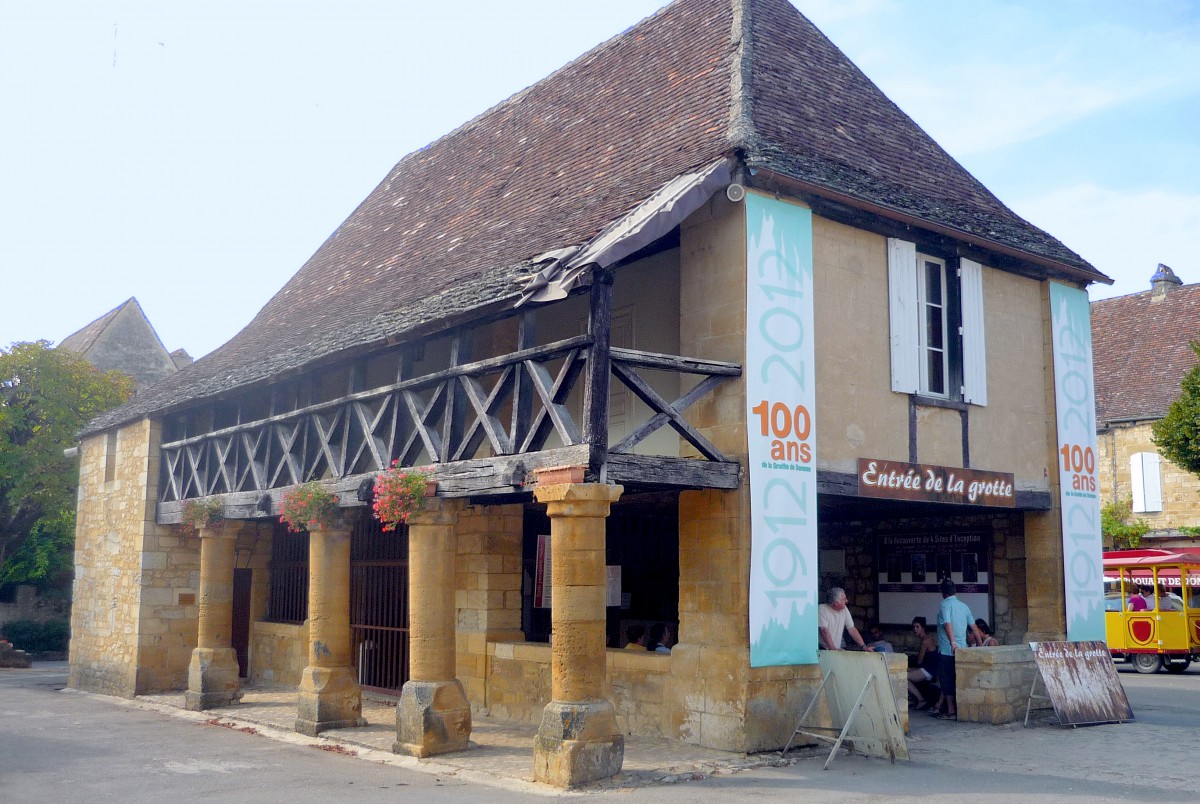
On Rue des Consuls, the surprising “grottes de Domme” (caves of Domme) include stalactites, water mirrors and lighting effects. The cave was used as shelter for Domme’s inhabitants during the many wars which affected the bastide. It contains 450 metres of galleries laid out as a series of rooms sometimes linked by a low-ceilinged passageway. The skeletal remains of a prehistoric rhinoceros and several bison were discovered when work was done on the cave and remain on display.
The fine view from Belvédère de la Barre
Visitors can enjoy one of the nicest views over the Dordogne Valley from the “Belvédère de la Barre”. This spectacular panorama includes views of the Dordogne Valley and stretches from the Montfort Meander to the village of La Roque-Gageac.

The Promenade des Falaises and the windmill
You can also turn left and follow the “Promenade des Falaises” (Cliff Walk). The path leads to the “Jardins Publics du Jubilé”. There is an orientation table that will help you understand the significance of Domme’s famous neighbouring sites.
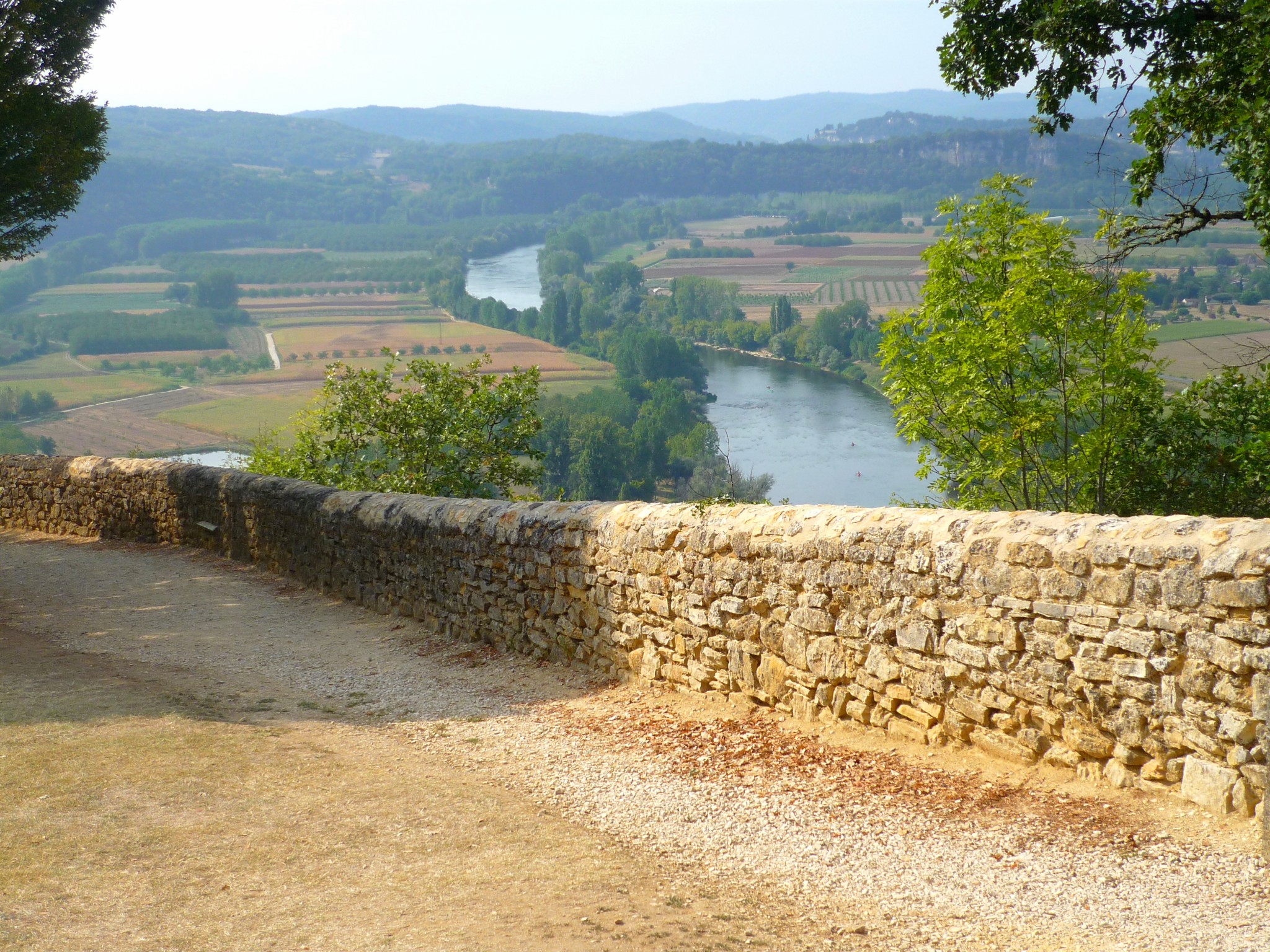
The path continues, passing by the Public Garden of the Jubilee before reaching the “Moulin du Roi” (King’s Windmill). The mill stands next to the site of the former fortress of Domme-Vieille. Simon de Montfort had it dismantled in 1214. However the ruins of the fortress are not open to the public.
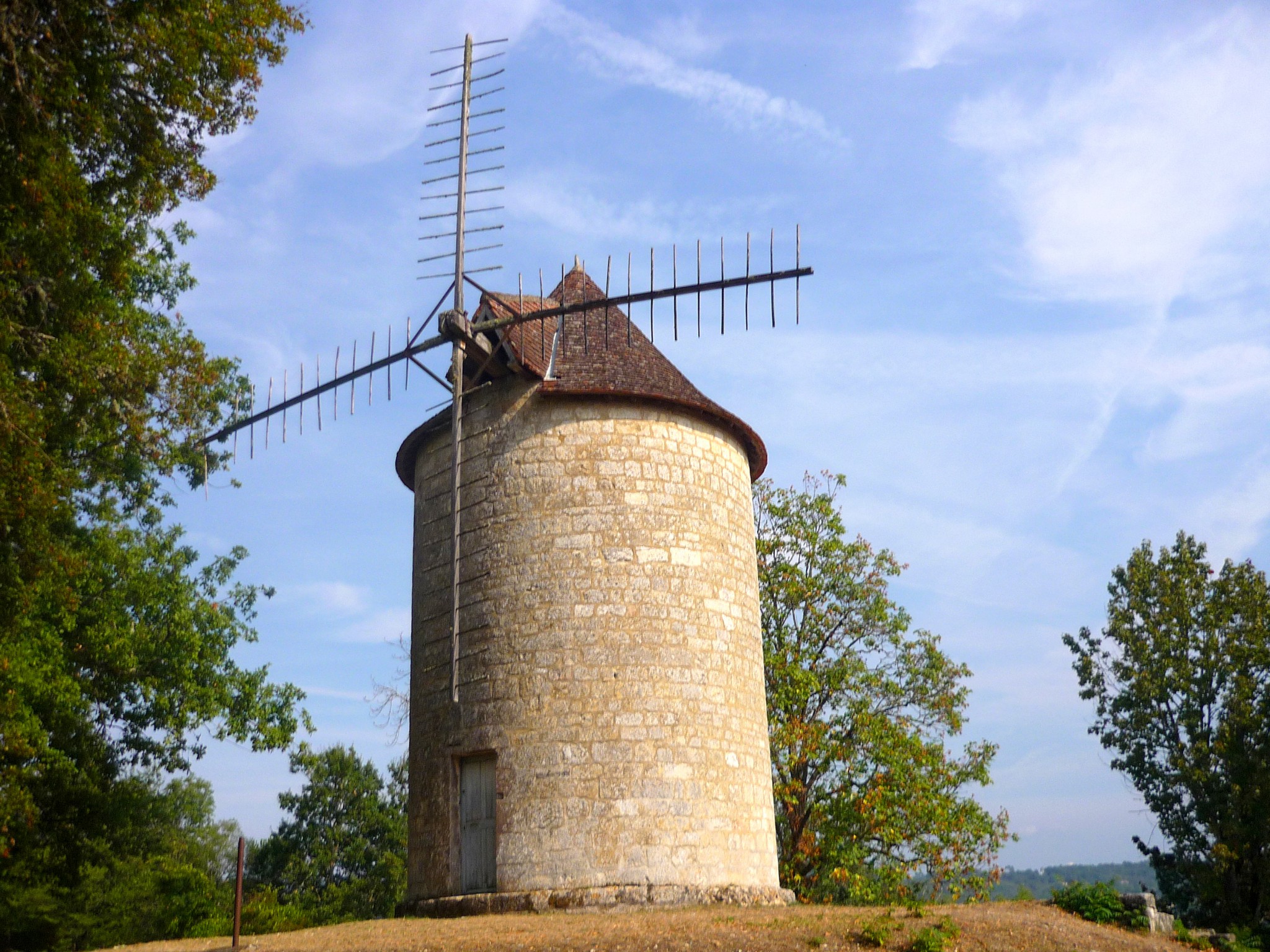
How to get to Domme
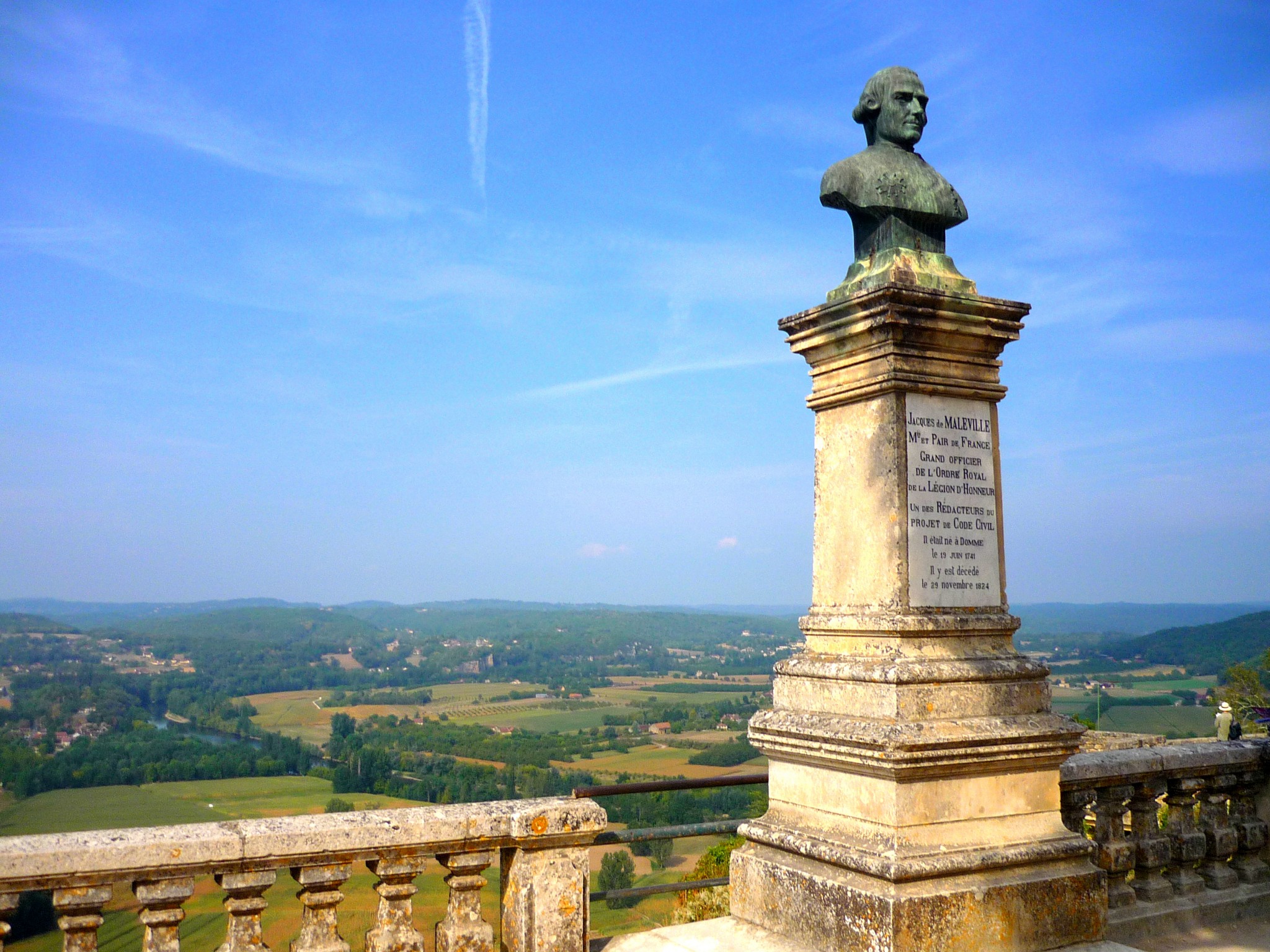
The Dordogne Valley is easily accessible by car from Paris, Bordeaux and Toulouse, via the A20 and A89 autoroutes (French for motorways). Domme is situated not far from Sarlat-la-Canéda (12 kms) via the D46 road.
For UK visitors, the closest airport from Domme is Brive-Souillac Airport (50 kms / 1hr trip by car) with direct flights to London-Stansted.
If you travel from Australia or America, you could take a flight to Paris Charles de Gaulle, and travel by TGV from the airport station straight to Bordeaux and rent a car from there.
The TGV from Paris-Gare de Montparnasse takes 3 hours to Bordeaux. A SNCF coach links Sarlat to the train station of Libourne which has direct trains to Bordeaux.
Did you find what you read interesting? If so, please do share this article on Facebook or twitter!
Inspired? Pin them for later:

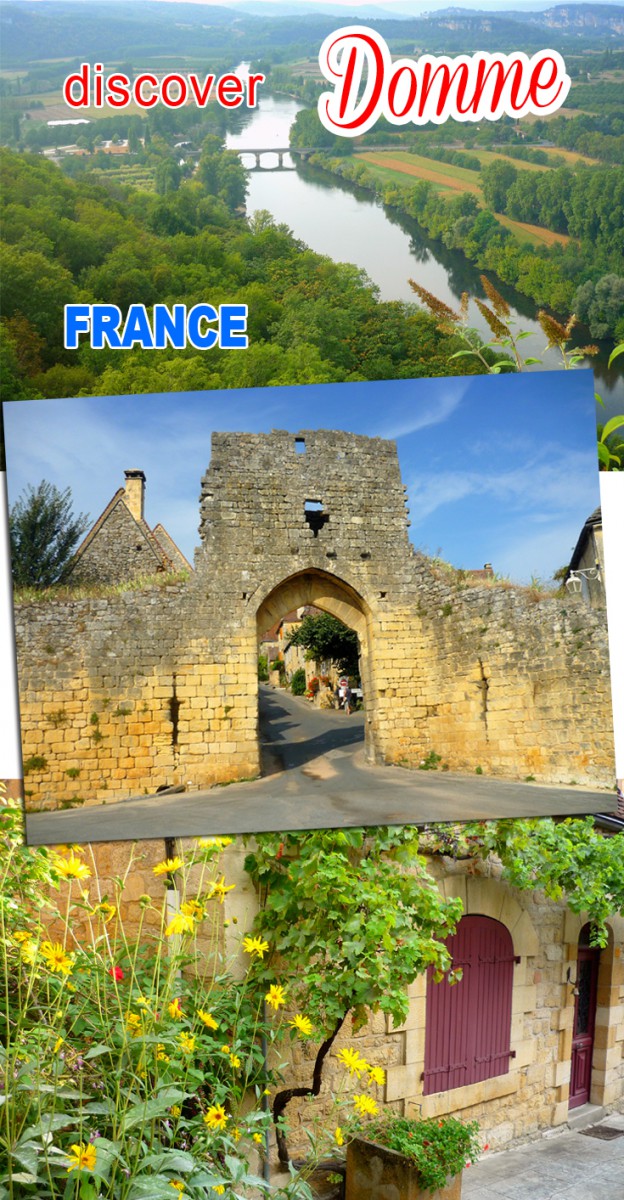
For more information about the bastide of Domme, visit the Tourist Office website.





